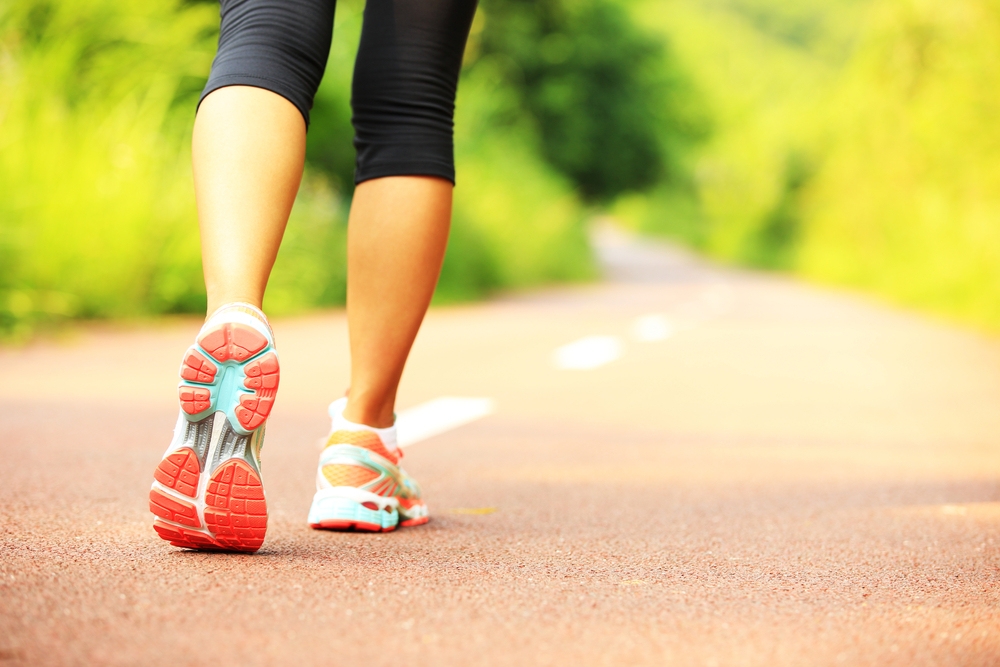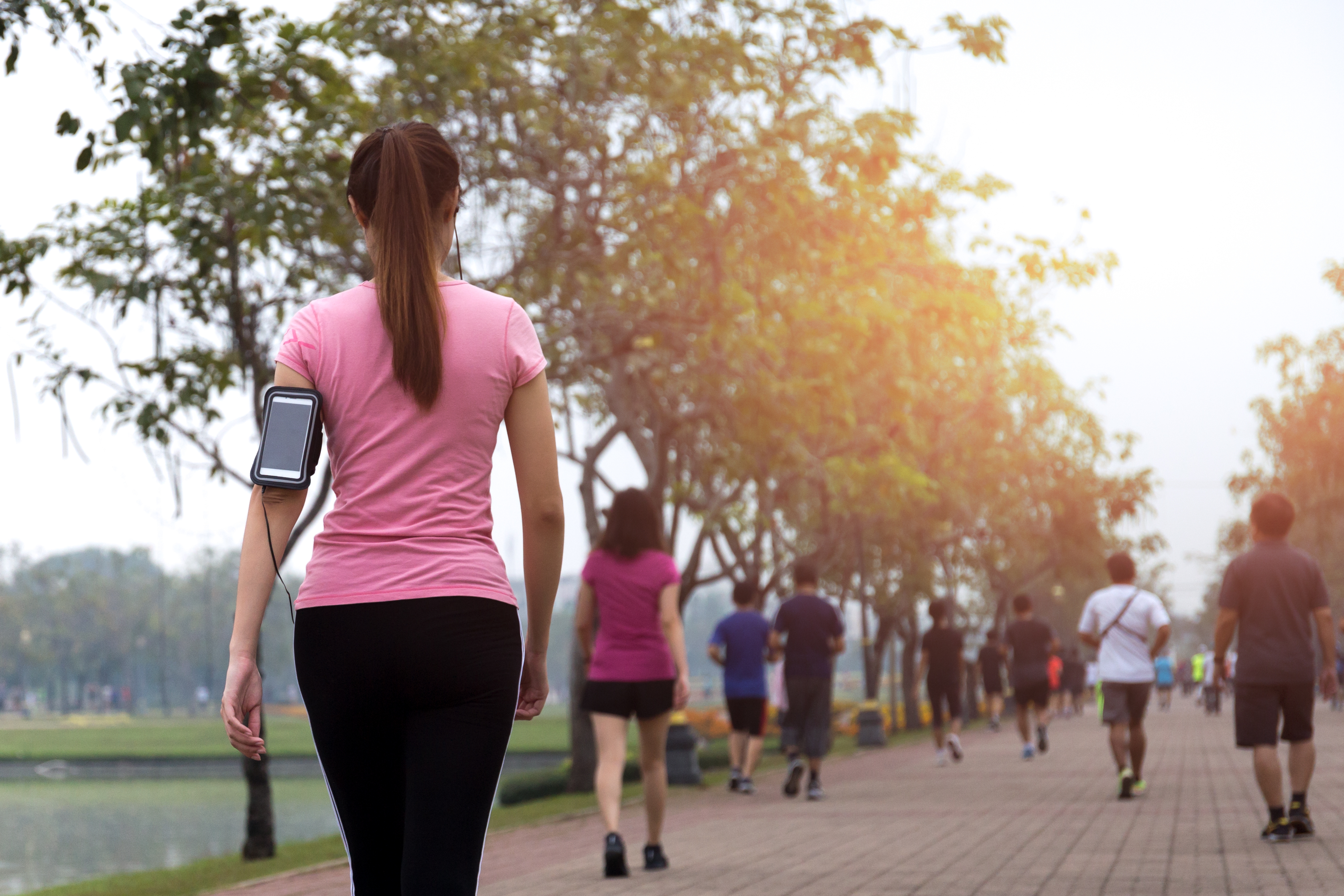
Walking briskly is probably the most convenient way to exercise.
It is simple and easy to learn, low in cost, almost free from the limitation of time and space, and has relatively high safety, which is very suitable for middle-aged and elderly friends.
The latest Dietary Guidelines for Chinese Residents (2016 Edition) point out:
The daily activity of Chinese residents reaches 6,000 steps, which is beneficial to keeping healthy.
The Benefits of Walking Hard
1. Enhance cardiopulmonary function
Long-term aerobic exercises such as brisk walking can enhance the heart’s ability to beat and deliver blood and fully exercise lung function.
2. Improve vascular conditions
Walking can promote blood circulation, exercise consumes excess fat, reduce blood lipid and maintain vascular elasticity, all of which are helpful to prevent cardiovascular diseases.
3. Strengthen muscle strength and prevent osteoporosis
The enhancement of lower limb muscle strength can improve joint stability. During exercise, the stimulation of muscle contraction also has the effects of relieving bone pain and reducing bone loss.
4. Other
Walking briskly can also improve one’s mental state and relieve mental pressure.
At the same time, reasonable exercise is also of great help to help control the three highs and improve fatty liver.
Mastering the Appropriate Methods
Of course, sports also need to talk about methods. Blindly [foolishly], may cause damage instead.
As long as you are standing or walking, your knee joint is bearing weight.
Walking, thigh muscles repeatedly contract to drive the lower leg forward, knee joint repeated flexion and straightening action, resulting in patellar tendon ligament pressure increase. The smooth bone in front of the knee is the patella, and the patella is the ligament. After slight injury accumulation, local aseptic inflammation will occur here.
However, incorrect walking posture will also aggravate joint wear and lead to osteoarthritis, which is not comfortable.
Outer horoscope or inner horoscope, walking in this way, the knee and toe are not in the same direction, increasing the pressure on cartilage and ligament at the knee joint, which will increase the risk of injury. It is recommended to adjust the posture.
In addition, shoulder buckle hunchback walking, the body leans forward too much, easy to cause neck pain, back muscle stiffness. On the contrary, walking with your stomach propped up will increase the force of hip, knee and ankle joint, which will easily lead to hip, knee and ankle injury.
Dragging on the ground is easy to cause strain of joints, muscles and arch of feet, and it is also easy to give people a feeling of sloppiness.
Is the correct posture how’s?
Correct walking posture is the first factor to ensure the exercise effect and avoid injury.
Hold your head high and tuck in your abdomen.
This posture can make you breathe more smoothly and avoid waist and back muscle fatigue caused by bad posture.
Swing one’s arms
When walking briskly, the arms should be swung back and forth, and as close as possible to both sides of the body. The elbow joint bends naturally, and the arm is swung back and forth with the shoulder joint as the axis, which can be larger than that of daily walking.
Don’t go too far
When walking in this gait, the buffering force of the sole of the foot becomes poor, which is easy to increase the risk of joint injury. For friends with knee joint diseases, the injury may be aggravated.
Stop slowly
Don’t stop exercising suddenly for the last 5 ~ 10 minutes, but gradually slow down the speed so that the heartbeat gradually returns to a calm state.

This is more efficient and safer
If a worker wants to do a good job, he must first sharpen his tools.
Appropriate equipment can help improve the sports effect.
Shoes
Long-term walking and standing will cause great impact and pressure on the heel, so a pair of light sports shoes with good buffering, fluency and stability are worth equipped with.
Socks
Walking briskly in winter, a pair of warm, breathable, dry and non-skid socks can reduce the friction between feet and shoes, make walking more comfortable and not easy to wear blisters.
Cane
It is suitable for people with older age, weak body or lower limb injury. Walking stick can enhance walking stability, share lower limb load, prevent falling and reduce the probability of knee joint injury.
Clothing
Sportswear with soft, breathable and sweat-absorbing fabrics is the best. When you go out in winter, remember to wear warm clothes. After the exercise is hot, you can reduce the clothes according to the situation.
Pedometer
If conditions permit, you can prepare one. More accurately grasp the number of steps and exercise intensity, and master your own exercise situation.
These also need to be noted
1. Warm-up is necessary
Sudden strenuous exercise may lead to strain or fall. You can walk slowly in the first 10 minutes to fully awaken your muscles and prepare them.
In addition, proper stretching exercise before exercise can reduce the injury caused by exercise.
For warm-up actions, please refer to this article on how to stretch before exercise.
Step 2 Control Exercise Intensity
In the process of walking, control the speed, not only to achieve the purpose of exercise but also to avoid excessive exercise intensity. Generally, the exercise intensity can be judged by the target heart rate and self-perception.
Target heart rate = (220-age) × 50% ~ 80%
Take 40 years old as an example, the heart rate after exercise should be 90 ~ 144 beats/minute.
However, the target heart rate is only used as a reference and cannot be generalized. The appropriate amount of exercise is to sweat slightly after exercise and feel muscle soreness slightly, but the soreness disappears after rest and the next day is full of physical strength.
3. Pay Attention to Weather and Temperature
Winter is the season of high incidence of cardiovascular diseases, and the blood pressure in the morning will be relatively high. It is suggested that you don’t need to exercise so early, and it is not too late to go out for exercise after the sun rises and the temperature rises slightly.
In severe weather such as extreme cold, strong wind, heavy snow, moderate and severe smog, you should avoid going out. You can use an indoor treadmill or practice in situ.
If you have chronic diseases, it is recommended to consult a doctor before making an exercise plan.
6,000 steps is a bit too much, what should I do?
Open it and do it.
If you are physically weak, you can divide the 6 000 steps into 2 000 steps in the morning, 2 000 steps at noon and 2 000 steps at night.
If you didn’t have what’s exercise habits before, you can start to try exercise step by step: reduce the daily exercise target of 6,000 steps to 5,000 steps or 4,000 steps, and then slowly increase it to 6,000-10,000 steps.
The 1,000 steps here are not casual 1,000 steps, but one [thousand step equivalent].
One thousand steps equivalent is about equivalent to walking 200 meters in 3 minutes and 10 minutes.
Roughly speaking, 1000 steps of exercise is equivalent to-
- Medium speed (4km/h) walking/downstairs, 10 minutes slow upstairs, 6 minutes hand washing, 9 minutes sweeping and mopping, 9 minutes outdoor play with children, 8 minutes cycling (12 ~ 16km/h), 8 minutes Taijiquan, 8 minutes table tennis, 8 minutes square dance, 5 minutes aerobics, 7 minutes
Everyone can choose and superimpose different activities according to their living habits.
After reading the article, let’s praise it first and then share it. Then let’s go out and take two steps together?
